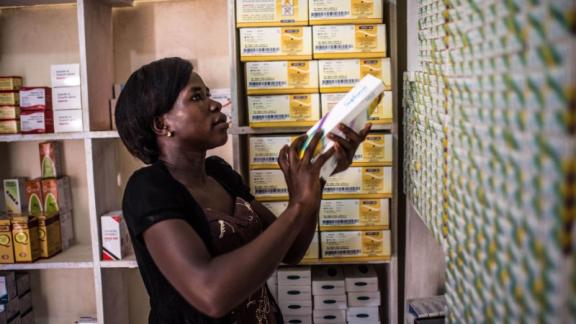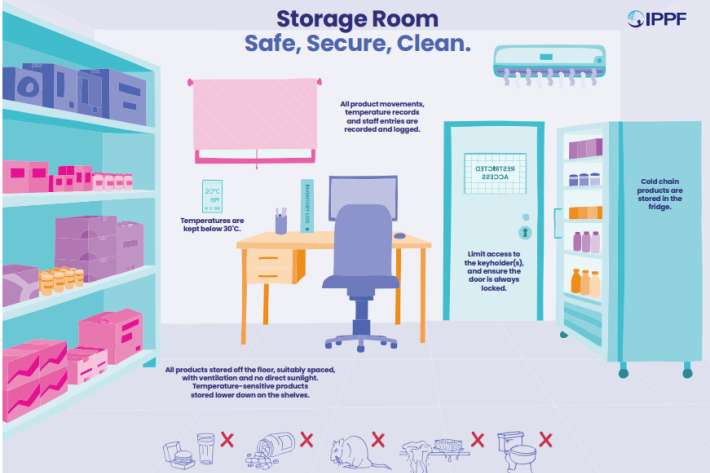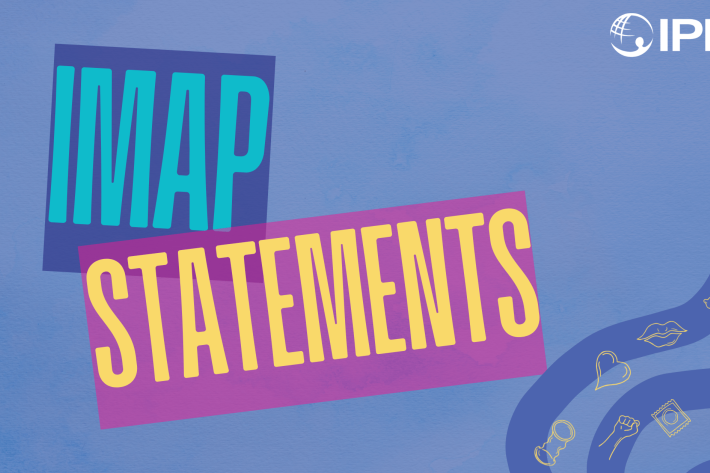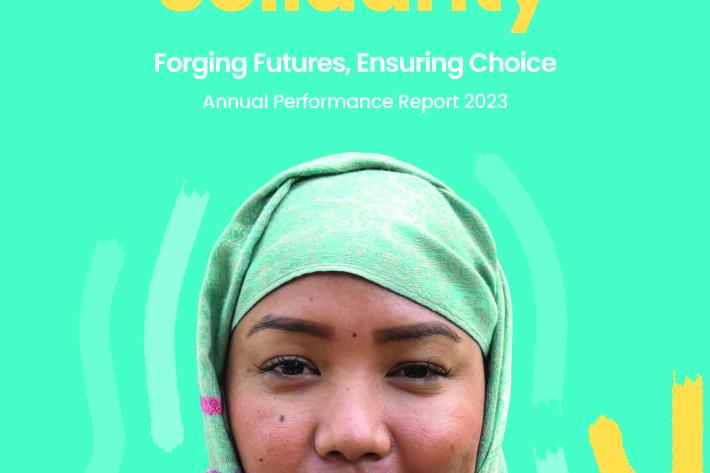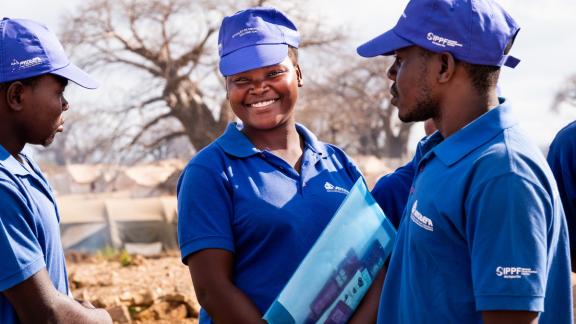Spotlight
A selection of resources from across the Federation
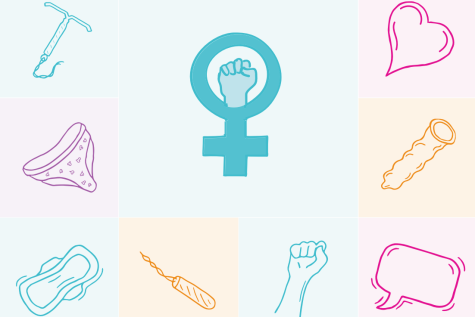
Technical Brief: Designing and Delivering Inclusive, Rights-Based Sexual and Reproductive Healthcare to Transgender and Gender Diverse People
This technical brief outlines key recommendations across several sexual and reproductive health service areas to promote access to inclusive care for transgender and gender diverse people.
Filter our resources by:
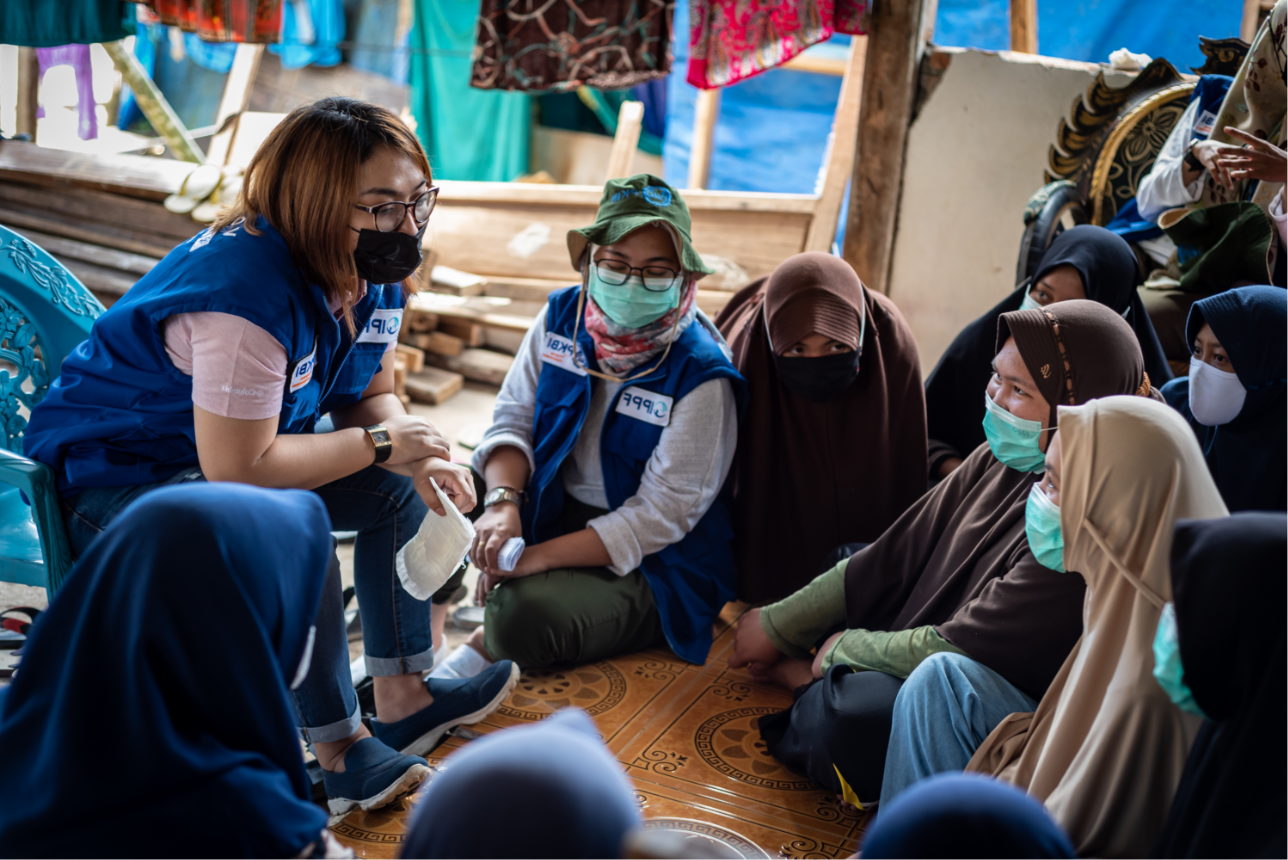
| 13 August 2014
At a Glance 2013
Key facts and figures highlighting IPPF's achievements in 2013. IPPF provided 136.6m sexual and reproductive health services and averted 580,000 unsafe abortions.
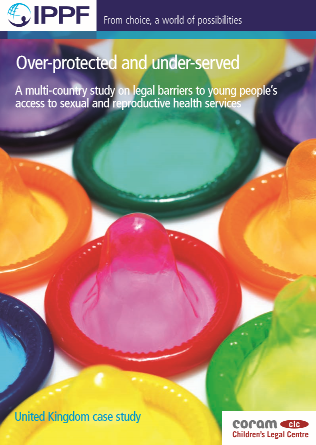
| 08 July 2014
UK: A study on legal barriers to young people’s access to sexual and reproductive health services
The key legal barrier to accessing services in the UK is the almost total prohibition on abortion in Northern Ireland and the need to travel to England and pay for abortion which disproportionately disadvantages young women. Lack of legally mandated comprehensive sexuality education, and lack of legal recognition of people who do not identify within the gender-binary norms or are intersex, also represent significant barriers to access. There are many permissive and facilitative laws and practices in the UK, which should ensure good access to SRH services, and are intended to be protective without hampering access to services, but access is compromised by other factors including: conflict between the stigma associated with younger aged sex (especially for girls) and media and peer cultures endorsing sexual activity bad delivery of sex education by teachers who are uncomfortable with the subject, which reinforces taboos concerns about the confidentiality of services in spite of legal obligations on service providers – especially in schools which often operate their own rules on reporting sexually active teens, and in small rural communities where service providers and pharmacists may know the young person’s family quality of service for LGBT youth may be poorer because of lack of knowledge or understanding of same-sex sexuality or non-binary gender identities most young people and service providers don’t see the law as an obstacle to services though beliefs about the age of consent does prevent some young people seeking SRH services the legal right of schools to refuse to teach CSE and of individual parents to withdraw children from classes reinforces the idea that informing young people about sex is corrupting and that young people have no independent rights regarding information and access to health services where CSE does exist it often focuses solely on the biological and inadequately addresses the law and young people’s rights within it young people report being reliant on information from the internet which includes poor sources of information and porn robust laws against sexual violence are undermined by victim-blaming and the low rate of rape prosecutions and convictions, which prevents people coming forward to report rape access to antenatal care is good and not perceived to be limited by legal issues Northern Ireland has different laws and practices to other parts of Britain and these are less permissive, more restrictive and more likely to present barriers to access. These reflect a more conservative culture which negatively impacts access even where it is not restricted by law. girls are more likely to conceal their or delay accessing services as all pregnancy options are stigmatised - young motherhood, adoption and abortion cultural and religious norms in Northern Ireland promote abstinence before marriage and reinforce stigma around youth sexuality which hampers discussion between young people and their parents the law in NI doesn’t require teaching of LGBT issues having to travel to specialist services represents a high cost, presents difficulties maintaining privacy and acting independently from parents and is a significant barrier for youth in rural areas especially in Northern Ireland which is underserved

| 30 June 2014
Annual Performance Report 2013-14
2013 was our second year implementing IPPF’s three Change Goals – Unite, Deliver and Perform. We have monitored the trajectory of our growth in performance to date, and are already seeing remarkable success in all three areas, as presented in our Annual Performance Report 2013-2014. Member Associations in 66 countries contributed to 97 changes in policy or legislation that support or defend sexual and reproductive health and rights. At the regional and global levels, IPPF’s advocacy contributed to 13 changes, of which ten were advances in safeguarding sexual and reproductive health and rights in the post-2015 development framework. With the delivery of 136.6 million services in 2013, we are on track to achieve our ambitious target of doubling the number of sexual and reproductive health services provided between 2010 and 2015. Eight in ten clients who accessed services were poor and vulnerable, and for the first time ever, almost half of our services went to young people. IPPF’s achievements in 2013 contribute to a strong performance culture where decisions are based on data, organizational learning happens at all levels, technical support is provided to increase effectiveness, and investments are made to support communities most in need.

| 10 March 2014
Vision 2020 Landmark Report
This report – the first in our Vision 2020 series – focuses on why sexual and reproductive health and rights should be at the core of sustainable development from the outset. Without them, the lives of women and girls will be compromised, as will people’s ability to lift themselves out of poverty and to live sustainably within their resources. Our focus for this first report is goal 1 of Vision 2020 which calls on governments to ensure that by 2015 a new international framework includes sexual and reproductive health and rights as essential priorities.
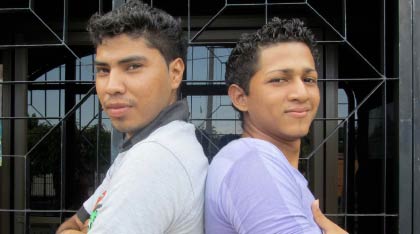
| 08 October 2013
Love, sex and young people: how to be a youth-centred organization
Watch the accompanying video report by the young people involved! Love, sexual rights and young people: learning from our peer educators how to be a youth-centred organisation celebrates the involvement of young people in planning, implementing and evaluating activities describes a participatory assessment methodology used in a multi-country project assesses the achievements of the A+ programme advocates for innovative strategies for all, including marginalised groups recommends using a gender-equity lens in all aspects of activity delivery Young people in these case-studies highlighted how marginalisation and exclusion affect young people’s sexual and reproductive health and rights. Peer educators identified groups of people who are particularly vulnerable, such as those living in rural areas and urban slums, and those involved in drugs, sex work and hard labour. The participants suggested new approaches combining income generation, education, access to services along with confidence building, and improving communication between girls, boys and adults in communities. A comprehensive report on a multi-country project: providing youth-friendly sexual and reproductive health services and comprehensive sexuality education; and advocating for the creation of safe spaces for young people. A youth centred approach to thinking, planning, management, programming and change is a way of working which promotes organisational development; and ways of working that are holistic, integrated, and not based on an issue or a target group. Many of the member associations involved young people in all aspects of the programme. In all settings young people worked alongside the programme staff to evaluate the impact of the project and to learn the best way in which to involve young people at all levels of youth programming. Work on sexual and reproductive rights is transformational, both psychologically and emotionally, when services expand beyond clinical treatment of illness alone. Sexual and reproductive health services can provide space where young people feel included, listened to, and able to express their concerns about relationships and sexual choices. Organisational issues are addressed including sustainability, communication, accountability, efficiency, effectiveness, financial issues and equity. Includes: a case study of an A+ project in Benin: ‘Rights and realities: strengthening adolescent sexual and reproductive health and rights in Benin’ a case study of an A+ project in Kenya: ‘No shame in reality: young people open up about sex, health and relationships in Oyugis, Kenya’ a case study of an A+ project in Nepal: ‘Hesitating at the door: differences in perceptions between genders and generations on sexual and reproductive health and rights in Kaski, Nepal' a case study of an A+ project in Nicaragua: ‘The better option: young people’s participation in sexual rights and services in Nicaragua’ a list of indicators to measure organisational commitment to youth programming a list of how things would be for young people in an ideal world a chart comparing the characteristics of an organisation beginning its journey towards being youth-centred and an organisation that is youth-centred
| 10 September 2013
At a Glance 2012
Key facts and figures highlighting IPPF's achievements in 2012. IPPF provided 112.7m sexual and reproductive health services and averted 550,000 unsafe abortions.

| 16 April 2013
Vision 2020 Manifesto
In 2000 the United Nations launched the Millennium Development Goals. The world agreed to take action against poverty. Although progress has been made, we are still far from eradicating poverty. Sexual and reproductive health and rights (SRHR) are central to this vision. Sustainable development and gender equality will be achieved when everyone has access to sexual and reproductive health, the right to bodily integrity, and control over all matters related to their sexuality. Millions of lives have been saved and changed through reproductive health services. In many regions, laws and policies are in place to protect reproductive rights and prevent discrimination against women and girls. However, despite these advances there are still challenges: global funding for SRHR has decreased radically while 222 million women and girls world-wide still lack access to the contraceptives they want to use. The next few years will see the creation of a new development framework. This presents us with an unparalleled opportunity to secure a world of justice, choice and well-being for all. Ultimately, it will lead to sustainable development. IPPF is inviting partners and supporters in the development community and beyond to make these goals a reality in every community around the world. Sign up today to pledge your support. We'll keep you informed with latest news and details on how you can get involved.
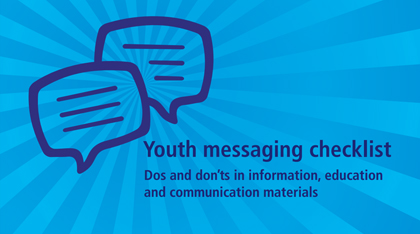
| 09 January 2013
Youth messaging guidelines checklist
Youth messaging checklist: dos and don’ts in information, education and communication materials encourages consistent use of positive, accurate and effective messaging for young people raises awareness of language that is stigmatising and undermines youth-friendly messages provides examples of language which reflect IPPF’s core principles explains the reasons why some words and phrases should not be used suggests simple rules for accessible, attractive visual design "Ensuring young people’s sexual and reproductive health and rights requires access to comprehensive, gender-sensitive and rights-based education and information." A checklist of dos and don’ts, language and messages for effective communication and education, addressing a lack of consistency in messaging across different IPPF Member Associations. Includes: checklists of messages to use and avoid, and preferred language across a range of topics: abortion diversity gender HIV and AIDS pleasure relationships sexual rights and sexual citizenship messages messages on violence sexual and reproductive health and rights and young people a checklist of dos and don’ts when selecting and using images, including links to online image libraries a checklist of dos and don’ts in design general dos and don’ts to consider when developing information, education, and communication materials for young people
| 15 October 2012
At a Glance 2011
Key facts and figures highlighting IPPF's achievements in 2011. IPPF provided 89.6m sexual and reproductive health services and averted 710,000 unsafe abortions.
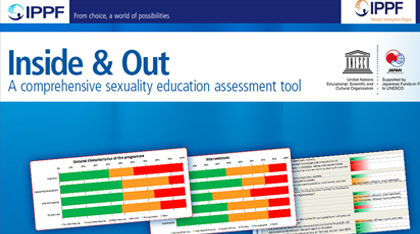
| 12 October 2012
Exploring new territories: dialogues on comprehensive sexuality education
Exploring new territories report captures new and critical thinking about comprehensive sexuality education (CSE) sets out different pedagogical (teaching and learning) approaches identifies new priorities for CSE recognises the challenges CSE presents asks what else we need to research and discover "Comprehensive sexuality education should respond to and celebrate the diversity that exists among young people across the world. It should equip young people with knowledge, skills, attitudes and values to determine and enjoy their sexuality. Comprehensive sexuality education should take a positive and respectful approach to sexuality and sexual relationships, and be part of broader emotional and social development providing opportunities to acquire life skills and nurture personal values." This document captures a discussion designed to generate critical thinking about CSE: moving beyond developing curricula and activities to thinking about delivery and different pedagogical (teaching and learning approaches); moving beyond providing knowledge to developing skills; moving beyond public health outcomes and towards human rights and gender equality; and how to measure success. A snapshot of the challenges identified: balancing broader rights and gender equality outcomes with specific public health outcomes ensuring appropriateness in different contexts applying evidence-based approaches to both content and method pre-empting and managing resistance to new approaches What else we need to know – new areas for research developing and testing new indicators for the effectiveness and impact of CSE examining how best to foster high quality rights-based teaching and learning skills how to develop effective and continuous communication with parents and community leaders the best strategies to link CSE with health and social service provision for young people Includes: a table of ‘challenges’ ‘opportunities’ and ‘recommendations’ key questions and issues explored during the workshop a checklist of values that underpin CSE a resource list







